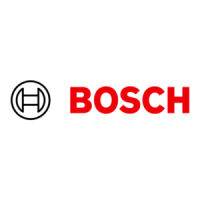Familiarising yourself with your appliance en
7
5 Familiarising yourself with your appliance
5.1 Cooking with induction
In comparison to conventional hobs, induction techno-
logy brings with it a series of changes and has a num-
ber of benefits such as time savings when cooking and
frying, energy savings as well as greater ease of clean-
ing and care. It also offers improved heat control as the
heat is generated directly in the cookware.
5.2 Control panel
Individual details, such as colour and shape, may devi-
ate from the figure.
Touch fields
Sensor Function
Main switch
Selecting the cooking zone
CombiZone
/ Selecting settings
PowerBoost
Time-setting options
Childproof lock
Displays
Display Function
Operating status
- Power levels
/ Residual heat
PowerBoost
Time-setting options
Touch fields and displays
Touch a symbol to activate the function it represents.
¡ Always keep the control panel clean and dry. Mois-
ture impairs the function.
¡ Do not place any cookware near the indicators or
sensors. The electronics may overheat.
5.3 Distribution of the cooking zones
The specified power has been measured with the
standard pots, which are described in IEC/EN
60335-2-6. The power may vary depending on the size
of the cookware or cookware material.
Area Highest power level
21 cm diameter Power level 9
PowerBoost
2200W
3700W
21 x 38 cm Power level 9 3600W
14.5 cm dia-
meter
Power level 9
PowerBoost
1400W
2200W
18cm diameter Power level 9
PowerBoost
1800W
3100W
5.4 Cooking zone
Before you start cooking, check whether the size of the
cookware fits the cooking zone that you want to use for
cooking:
Area Cooking zone type
Combi cooking zone You can find addi-
tional information about this under
→"CombiZone", Page9.
Single-circuit cooking zone
5.5 Residual heat indicator
The hob has a residual heat indicator for each cooking
zone. Do not touch the cooking zone if the residual
heat indicator is lit.
Display Meaning
The cooking zone is hot.
The cooking zone is warm.

